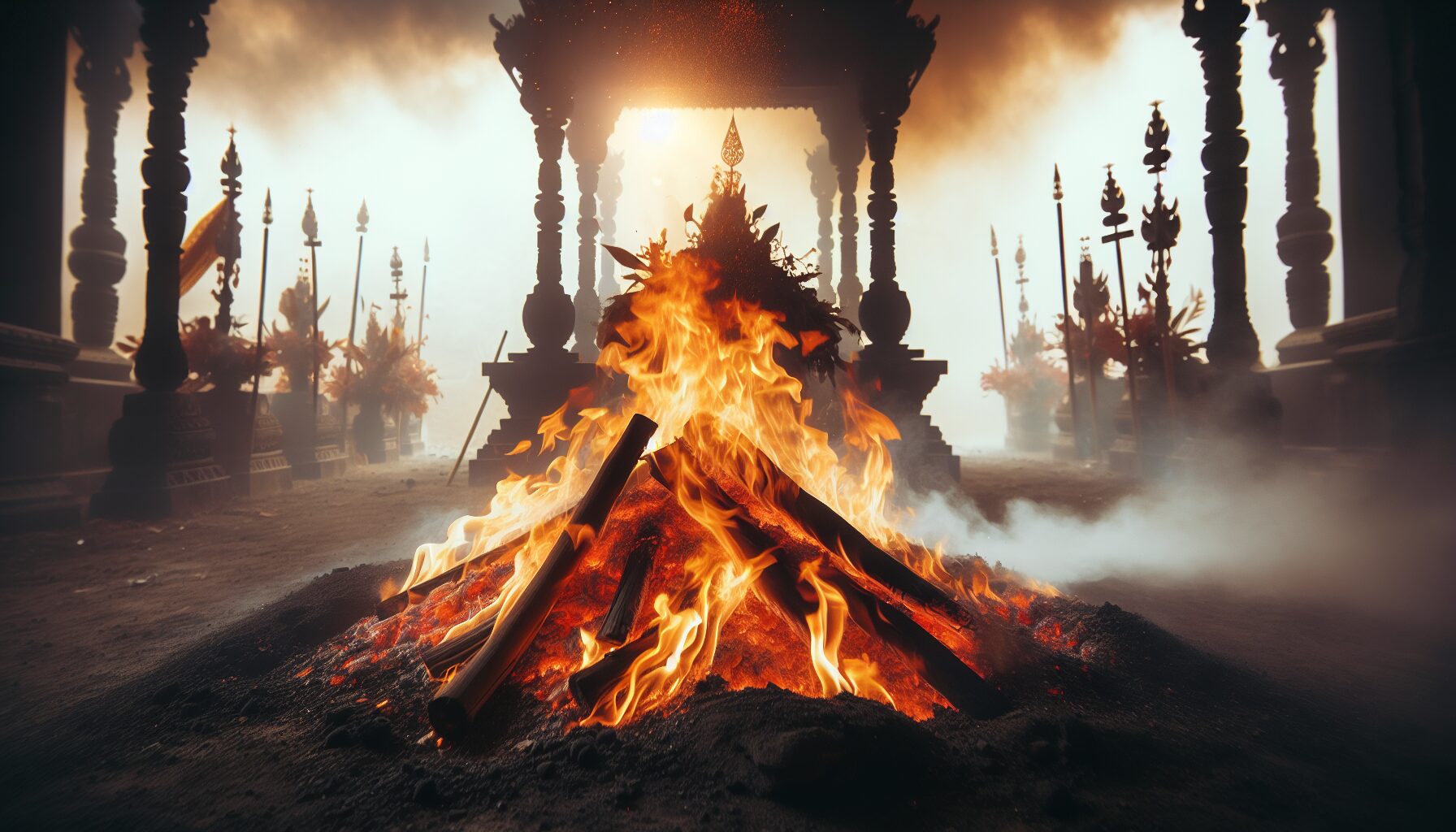Introduction
Throughout history, fire has been perceived as both a formidable and sacred element. Its role transcends mere utility; it symbolizes transformation, purification, and the eternal cycle of life and death. Among its significant cultural implications is the practice of ritual cremation, a rite that has profound spiritual and historical significance across various cultures.
Historical Background
The tradition of cremation dates back many thousands of years. Archaeological discoveries suggest cremation practices were conducted as early as the Stone Age, approximately 20,000 years ago. Evidence of such practices has been found in archaeological sites around the world, from the early Aryan tribes of Europe to ancient civilizations in Asia.
According to the Archaeological Institute of America, one of the oldest evidence of cremation has been discovered at the site of Lake Mungo in Australia where human remains were cremated around 40,000 years ago. In Europe, cremation became widespread by the time of the Bronze Age.
Cultural Significance
The spiritual implications of ritual cremation are deeply embedded in many religions and cultures. Each culture attributes unique meanings and practices associated with the act.
Hinduism
- The Cycle of Samsara: In Hinduism, cremation is intertwined with the concept of Samsara, or the cycle of life, death, and rebirth. The fire acts as a purifying force, liberating the soul from the physical body. The sacred fire is often seen as a bridge for the soul to reach the afterlife or gain reincarnation.
- Ritual Process: The cremation process itself is filled with ritualistic acts. The eldest son traditionally lights the pyre, and prayers are recited to ensure the proper passage of the soul.
Buddhism
- Impermanence: Reflective of the Buddhist belief in impermanence, cremation symbolizes the transient nature of life. The decomposing body through fire reinforces the understanding that life is temporary and ever-changing.
- The Middle Path: In some Buddhist traditions, cremation is seen as following the ‘middle path’ between earth burial and sky burial, reinforcing balance and harmony.
Western Traditions
- Roman and Greek Practices: In ancient Rome and Greece, cremation was associated with honoring the esteemed dead, especially warriors and philosophers. It was considered a noble and proper way to deal with the dead.
- Modern Adoption: Today, cremation in the West is often chosen for pragmatic reasons, yet it retains the symbolism of returning dust to dust, restoring the body to the natural cycle of life.
The Science of Cremation
While the cultural aspects of cremation are profound, the scientific process is both fascinating and intricate. Modern techniques involve the use of specialized furnaces called cremators, which operate at temperatures ranging from 1400 to 1800 degrees Fahrenheit (760 to 982 degrees Celsius), sufficient to ensure the complete disintegration of the body’s organic components.
According to The Cremation Society of America, this process typically lasts between one and three hours, depending on the size and weight of the body, after which only bone fragments remain. These fragments are then processed into a fine ash.
Environmental and Ethical Considerations
In the face of climate change and environmental awareness, ritual cremation has been scrutinized for its carbon footprint. The burning of a single body can release significant amounts of carbon dioxide, contributing to greenhouse gases.
“Cremation has been known to release approximately 540 pounds of CO2 into the air per body,” says environmental expert, Dr. Lucy Anderson in Journal of Environmental Studies.
In response, eco-friendly options are being developed. Water cremation, also known as alkaline hydrolysis, involves decomposing the body in a pressurized liquid, reducing environmental impact significantly.
Conclusion
Ritual cremation stands as a testimony to humanity’s quest to reconcile with death, offering a vessel for the soul’s passage beyond mortal life. It is a profound tradition that embodies peace, transformation, and spiritual liberation, with each culture imbuing its unique significance. As societies continue to evolve, so too do these age-old practices, adapting to new values and environmental realities while maintaining their timeless essence.

Comments